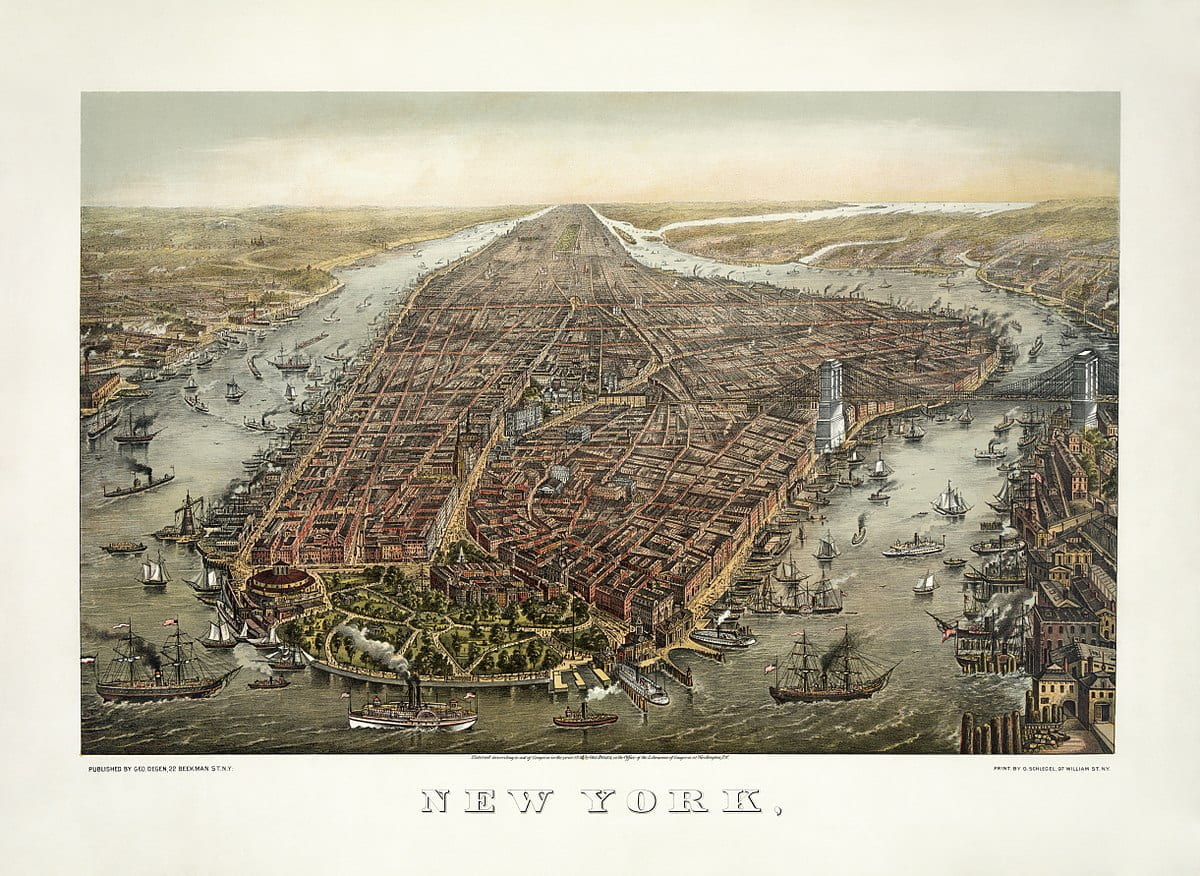Alexa M. and Keira E. – New York History: A Photographic Narrative

Directions:
- Read Artist Statement for information about the project and short biographical information about the presenters
- Scroll down to the map, expand it by clicking on the top right corner (after selecting a pin on the map, to make a photo larger, click the photo again)
- Enjoy the project!
Artist Statement:
Alexa: For me, growing up in the city meant noticing change daily, whether it was complaining about noisy construction outside my apartment building or walking to school and noticing restaurants and storefronts appearing and disappearing within months. I grew up interested in preservation and development without even knowing it. In 10th-grade history class, we did a unit on local history, where we looked at photos from the late 19th century and compared those photos to ones we took. Observing the similarities and differences of these photos within the contexts of their respective time periods immediately became something that I wanted to pursue outside of class and was the inspiration for this project.
Keira: I chose this project because growing up in New York City, change is constant. There is construction, expansion, and renovation at all times. When I was a kid, my parents were always pointing out different areas and buildings and telling me what used to be there, or what it used to look like. Recently, I had a similar experience while watching the construction of Hudson Yards. Watching the rail yard transform into a residential and commercial hotspot in such a short period of time was one of the main inspirations for this project. Documenting how the city has developed in the past 100 years captures an aspect of the constant change that I watched growing up and lets us appreciate the preservation that has prevailed.
This interactive map is a culmination of the photography and research we completed throughout the project. We traveled around the city and state to Williamsburg, Chelsea, Greenwich Village, the Financial District, Jackson Heights, Kingsbridge, Woodstock, Rhinebeck, Kingston, Saugerties, Staatsburg, Poughkeepsie, New Paltz, and Hyde Park, taking photos of preservation and development. Our intention was to create a visual representation of preservation and change throughout New York City and New York State. By doing this, we hoped to determine the motivation, significance, and effects of preservation. Each pin in New York City contains two side-by-side photos, one from the early 19th century and one that we took within the last six weeks. Under each set of photos is a short description containing the year each photo was taken, the street pictured, and the use of each building. Scrolling further up, Each pin in upstate New York contains photos of specific historical sites or buildings, both preserved and unpreserved. Each pin also contains a description of the structure, history of the building, and a brief conclusion determining the success or failure of the site’s preservation. Audience members can scroll through the list of pins or the pins on the map itself, clicking around, reading the provided descriptions, and enjoying the photography. Ultimately, the map as a whole is a visual representation of what is preserved versus what is not. Using the context and information from the map, our hope is that readers discover not only what is preserved, but why.
Our main question for this project was: What determines if a site is preserved and how do preserved vs unpreserved areas change over time? The interactive map we’ve created shows various levels of preservation in different areas of the city and the state. There is no singular answer to our question; there are a surplus of factors that dictate preservation and development. The photography and research we did throughout this project shows a snapshot of New York, and the map can be used to make observations that answer the question we asked at the beginning of this project. Of the discoveries we made about the motives behind preservation, the most noticeable was the influence of wealth and power on preservation. We observed this influence in all areas we visited and in our research. The areas that have consistently resisted development were the wealthier locations that we explored, such as Greenwich Village. When researching how the city was built and expanded, we observed the destruction and neglect of poorer communities, especially in our research of figures such as Robert Moses. Lastly, we witnessed the preservation of the homes and estates of the rich and powerful, especially in upstate New York. This takeaway was the most prevalent in our work and on the map we have created, but it is just one of many overall themes that answer our essential question.